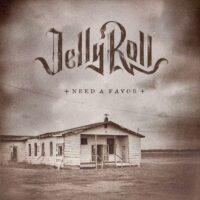
I was at Country Radio Seminar last Thursday morning. At CRS 2024, there was a lot to talk about, particularly Beyoncé and the inroads of AI at radio, but there was overall positivity after an up year for Country music and radio, making it clearly the healthiest of radio’s current-driven formats.
Country is the format where streaming has led to a robust supply of exciting new artists, not one-offs. But it’s also a format where traditional radio- and research-driven hits still exist, even if not all of them eventually drive streaming. Country labels have seen consolidation; as in all formats, they also deal with a shrinking number of decision-makers. But the radio/record relationship remains visibly healthy.
As in other formats, Country radio is now thought of as “the finisher.” But after saying that, BMG’s Jon Loba, on the final CRS panel, cited Jelly Roll — easily the format’s most beloved recent breakthrough, judging from PD conversations — as “a great exception. There were a small group of guys who took a shot without necessarily [seeing] the metrics.
“I say all the time to radio, if all you’re doing is magnifying streaming hits, your job will become extinct,” Loba added. “They can save a lot of money by getting rid of you.”
The staff reductions that rocked the industry last week had already started with Warner Music Group before I arrived at CRS. It was on Thursday morning that I first became aware of the magnitude of the Universal Music Group consolidation. All the departing names were painful to hear; one to whom I owe special gratitude is Interscope’s Chris Lopes, the first label supporter when Ross on Radio became a separate publication in 2009.
In 2021, it was an Interscope record I would often cite as an example of radio’s continuing value to the industry; “Driver’s License” was No. 1 on the Hot 100 on arrival but radio was still seen as crucial to making it a real hit. Now there are industry discussions of whether radio should still be part of the Hot 100, no longer even “the finisher.” Recently, a reader asked how radio would respond if there were no more designated “radio singles” because there were fewer radio departments?
Again this week, I find myself wondering:
- Who is the new paradigm working for? Are we happier with fewer core artists, fewer mass-appeal hits, and smaller footprints for those songs that become hits? Are “Lovin’ on Me” by Jack Harlow and “Hiss” by Meghan Thee Stallion, both Billboard No. 1 songs, but only one a radio record, really hits of equal magnitude? And if not, what do the charts mean now? If streaming alone has been the road to profitability, why is there all this consolidation, and why are artists still talking about the difficulty of living off royalties? Why isn’t the label frustration with TikTok as the nation’s music supervisor making radio look like a better alternative? (Or at least an additional choice?)
- Does radio think this is working? Does radio understand the necessity of preserving the radio/record relationship in part as a matter of self-preservation? Contemporary radio has not been higher rated with fewer songs to choose from and fewer than 20 consensus hits a year. Contemporary radio decided 20 years ago that concerts were going to be a significant revenue stream. Are stations really happier being out of the summer-show business because there’s no longer a vital artist pool to pull from?
One indication of the continued validity of the radio record for me has been Shinedown’s “A Symptom of Being Human.” That song came on to my radar as a research-driven power and then the No. 1 song of 2023 at WIXX Green Bay, Wis., the top-rated reporting CHR in America, at a time when it was only being worked to Hot AC. It would go on to become a song where airplay drove streaming, and confirm the value of a multi-format hit, spreading from Adult CHR to Alternative to Active to CHR. (“Texas Hold ’Em” is also a pretty good example of what happens when a song can be on Country, CHR, and Triple-A.)
My vision of a healthier landscape has always involved a steadier flow of product in all formats, and a label/radio relationship where the cost of promoting more music isn’t prohibitive. I’m not at the center of this dialogue, except by dint of this column. But I want the column to be a facilitator for those people on the radio and label side more able to make that happen. Some label people are 25-year friends, dating back to a time when I was directly involved in the chart process; some don’t know me. I want to facilitate a dialogue so all can flourish.
Watching radio struggle for respect in the label ecosystem drives home the realization that many of the upper-level decision-makers now didn’t come from the promotion side, something that will only become more pronounced as those staffs are reduced. The title of this article began as “Support Your Local Record Person,” something that’s already not possible in a lot of cases. I hope radio will support their local, regional, or national record people, whether the people at UMG and WMG who have to do more with less, or anybody else calling on them. I hope together you will create artist stories their bosses can’t ignore. Or yours.
This story first appeared on radioinsight.com
